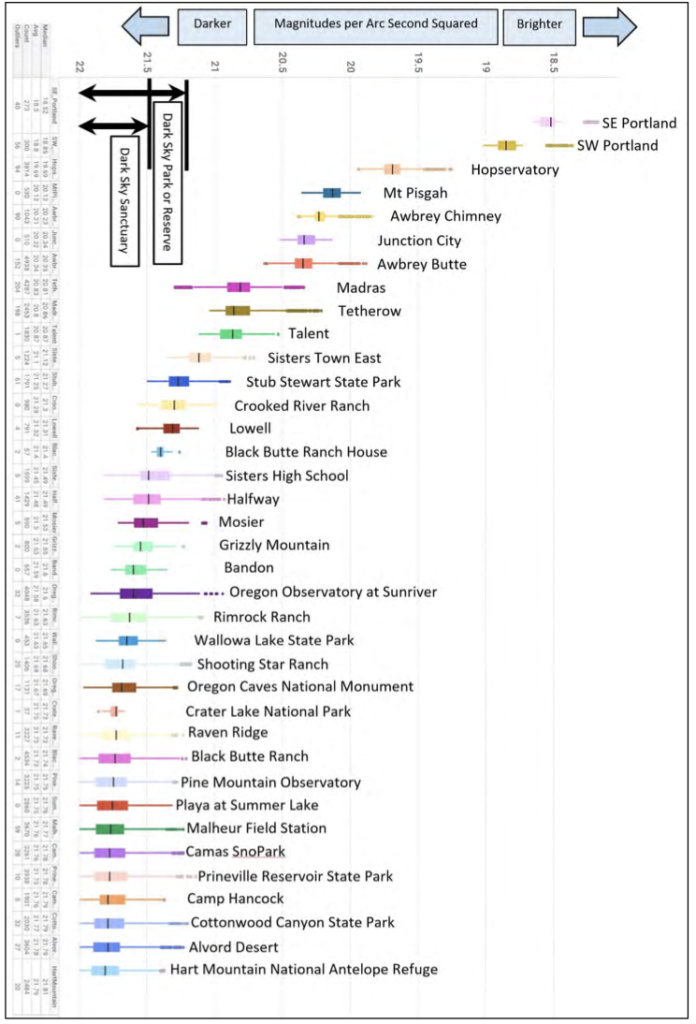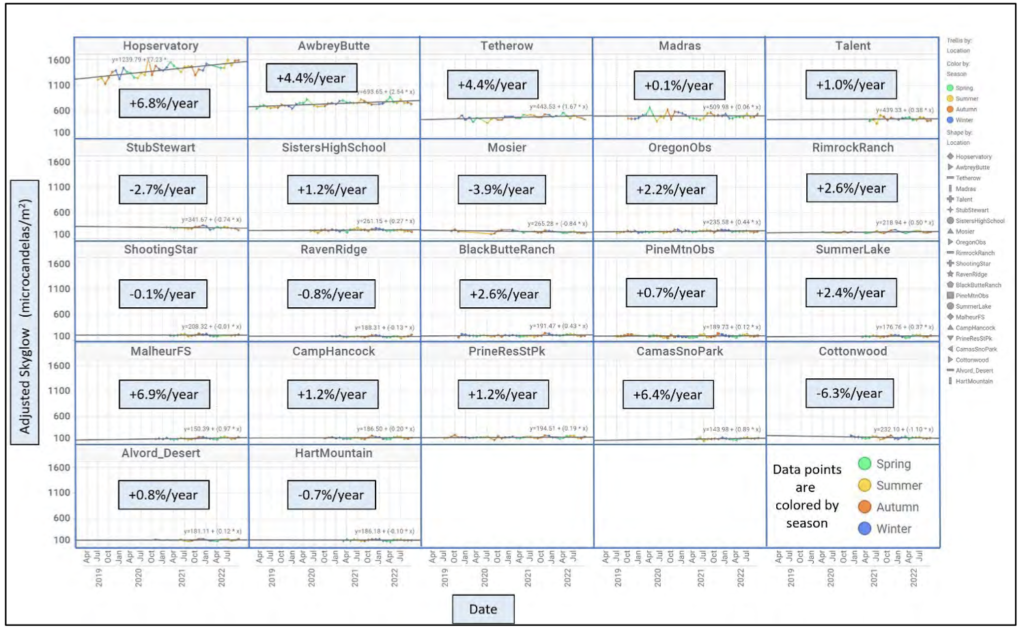Every few months, the IDA Oregon Chapter puts out their most recent report about how the previous few months have progressed from a light pollution perspective. We previously covered the 6th report, therefore, with the 7th report, this will be covering some of the big changes in the work and Oregon Dark skies. Please note that all quotes and figures come from the report, they are not our own original work.
Interesting trends include, showing that “the processed data show increases of 4% to 7% per year for SQM sites in expanding cities in central Oregon. Other peripheral SQM sites show increases of 2% to 4% per year, while remote sites tend to show little to no change in zenith skyglow per year. A notable seasonal and month-by-month cyclical pattern of skyglow remains in the data after these adjustments. We anticipate that the cyclical pattern remaining is due to a combination of seasonal atmospheric differences and to variable airglow phenomena.”
This is important as what we see is that the sites such as Cottonwood Canyon State Park, Prineville Reservoir State Park, and other familiar places remaining dark skies. And while some of these sites change places with such other for which is darker, the differences for some of these darker sites is minimal.

The box plot above sows the clear sky measurements of 37 sites with the dates ending November 2022, The upper left marker shows the IDA cutoffs for Dark Sky Places.
The table below shows the raw videos for the table above.

What this shows is that Cottonwood Canyon State Park is one of the darkest place that you can use for astronomy. We are happy to have made IDA Oregon and the Rose City astronomers to have become aware of the state park as it is extremely dark skies and close to Portland. The
Moreover, the values from the previous report, to provide 1.5 years of data to examine trends, shows some interesting results.

To check out the full report, check out the darkskyoregon.org website. Make sure to follow us on Twitter and Instagram, and make sure to view our other unique astronomy sites such as this one for more places to view astronomy in the Pacific Northwest.

Be the first to comment on "Oregon Dark Sky Brightness Update #7"